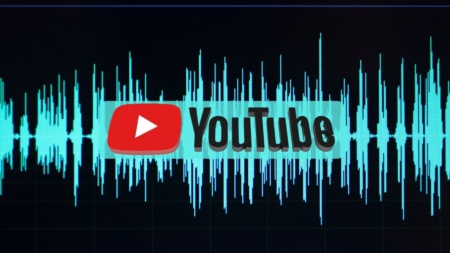People will watch a low-quality video, but they’ll bounce immediately if they hear lousy audio.
But how do you get “good audio.” I racked my brain on this for months and came up with 7 tips to help you get the most out of your YouTube videos.
1) Pick a Polar Pattern (AKA: Decide Where To Place The Microphone)
More important than anything else is where you plan to place your microphone in relation to your audio source.
For example, your cell-phone, camera, or the lavalier microphone that you clip to your shirt is an omnidirectional microphone. This means those microphones pick up sounds in all directions equally. This type of mic can sound just fine if it’s placed 6 inches from your mouth. But, if placed 6 feet away, you’ll get lousy audio from that mic no matter how much you paid for it.

You can still get decent audio if you want to place your mic on top of your camera. Just remember that you will need to buy a microphone with a polar pattern that’s made for that. Picking the correct polar pattern for your microphone placement is far more critical than the microphone you buy.
Suppose you want to place your microphone on your camera that’s 6 feet away from you or more. In that case, you’re going to want to get a microphone with some type of directional cardioid polar pattern.

Shotgun microphones will have this polar pattern. A $60 option that I like for beginners is the Rode VideoMicro. But, if you get really into this, you can spend $1,000 or more on a Sennheiser MKH416. That’s the mic they’re using in Hollywood.
2) Buy a “Clean” Pre-Amp
When I first started with YouTube, I kept getting a white noise/hissing sound in all of my videos. It didn’t seem to matter which microphone I used. I could not for the life of me figure out why this kept happening.
What’s happening is your voice’s sound energy doesn’t actually produce a powerful electrical current (particularly with dynamic microphones that don’t supply electricity to boost the signal). Meaning your pre-amp (which is probably in your camera if you record straight to that) has to increase the electrical signal to play it back at a decent volume.
When your pre-amp boosts the volume (applies gain), that static noise will get introduced into the recording. I couldn’t get rid of the noise because my $500 Panasonic G7 Camera had a low-quality pre-amp. It introduced a ton of noise even with minimal gain applied.
The simplest solution to this costs money. Buy a decent pre-amp. This might mean upgrading your old camera to one with a better pre-amp. Or it might mean buying a RodeCaster Pro, dbx 286s, or even just a Zoom H5 to record into.
3) Place a Limiter on Your Audio in Post
YouTube will lower the volume on your entire YouTube video if any part of the video gets too loud.
And it’s actually pretty easy to check if YouTube is doing this to your previous videos. Open up one of your YouTube videos, right-click it, then click Stats for Nerds.

What you’re hoping to see here is a “content loudness” metric that’s as close to 0.0dB as possible. If you’re within a few dB of 0.0 in either direction, you’re doing great. However, suppose YouTube is lowering your volume by more than 5 dB. In that case, you could really improve your audio by merely fixing this.

A Limiter sets a maximum loudness on your audio track. Any sounds that go over the limit will be reduced in volume so they’re under the limit. Placing a Limiter on ALL of your audio will really help to prevent YouTube from lowering your volume after you upload.
If you’re using something like Final Cut Pro to edit, you can simply hit cmd-5 then click levels under audio effects. In there, you’ll find a limiter that you can drag and drop over your audio. And every other decent video editor out there will have a similar effect you can leverage.

4) Place a Compressor Your Audio in Post
This is also related to YouTube lowering the volume on your videos. An audio compressor will attempt to reduce your Audio’s dynamic range. It makes the low volume sounds, and high volume sounds closer to each other in volume level. This is also a very easy effect to add to your audio in Final Cut and most video editing software out there.

The reason this helps is that if YouTube is lowering the volume on you after you’ve uploaded your video, then your quietest sounds might disappear entirely. With those sounds boosted, that’s much less likely to happen.
5) Export Your Audio At -14 LUFS
LUFS stands for Loudness Unit Full Scale, and it’s basically our best attempt at creating a standard for how loud a recording is. Think of it as like a meter or a liter when measuring distance or liquid.
As of this writing, YouTube has its loudness reference set at -14 LUFS. Meaning, you should aim to export your video at that loudness. It makes it less likely they’ll reduce the volume of your video.
As of this writing, Final Cut doesn’t have the option to export your entire clip at a specific LUFS level. But, most video editing software does. Or if you’re recording into something like the RodeCaster Pro, you can export the audio at that LUFS level and not have to alter it in post.
6) Use a Noise Gate
Noise Gates are absolutely incredible! It takes tiny noises like the sound of you breathing and removes them from the audio. This really has an impact on perceived audio quality.
Noise gates will block out sounds that don’t reach a certain volume threshold. All those distracting little sounds in your recording environment simply go away. Video editors like Final Cut will have that filter built-n.

However, you may be better off applying all these filters (Noise Gates, Limiters, Compressors) with the RodeCaster Pro instead of trying to add them in post.
The reason for this is you can hear what these filters are doing to the recording in real-time (with a decent pair of headphones) and decide if you like where your levels are at. If you’re applying these same filters in post, it might become challenging to get the same quality if something’s off about your recording.

It’s more work to do this in post, nobody likes doing more work. We want to get these videos out fast.
7) You Don’t Need a Lot of Money (But it helps)
I won’t lie to you. You’re going to get better results if you buy a Sony A7Siii, an XLR-K3M, and a Sennheiser MKH416 than if you try to make this work with your cell-phone. However, that’s going to set you back $6,000 or more.
You go out and buy a RodeCaster Pro and Equitek E100S Supercardioid Condenser Microphone and you’ll get good results. But again, that’s $1,100.
While those solutions are definitely cool. You can actually get pretty good audio straight out of your cell-phone. I still find the following YouTube video inspiring. This guy makes cell-phone audio sound good and look cool. Start there if you’re broke.
6 out of 7 tips in this article don’t require money (although money makes them easier to do for sure). If the guy in the video above can sound that good and make it look that cool… So can you.










